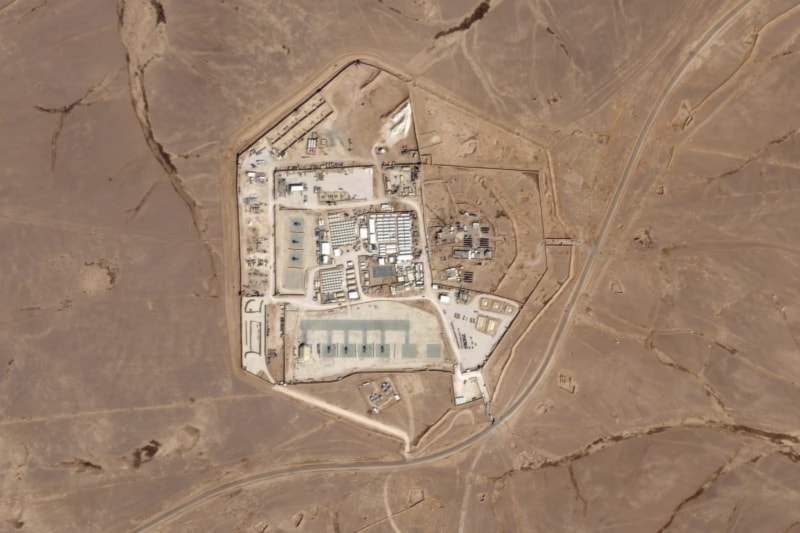
The U.S. defense secretary’s remarks came after Sen. Elizabeth Warren and other law experts around the world asserted that Israel’s Gaza onslaught meets the legal definition of genocide.

U.S. Defense Secretary Lloyd Austin on Tuesday became the latest Biden administration official to deny that Israel’s six-month bombardment, invasion, and siege of Gaza constitute a genocide, a statement that came after Sen. Elizabeth Warren joined a growing number of international jurists asserting that Israeli policies and actions are genocidal under the letter of the law.
After pro-Palestine protesters wearing T-shirts with the message “Austin’s Legacy = Genocide” interrupted a Senate Armed Services Committee hearing Tuesday morning, Sen. Tom Cotton (R-Ark.) asked the Pentagon chief if Israel was committing genocide in Gaza.
“We don’t have any evidence of genocide being created,” Austin replied after a short pause.
You Might Also Like
- Ireland: “What’s happening in Gaza is not defence, it’s an annihilation”
- Twenty Years After George W. Bush’s Infamous ‘Mission Accomplished’ Claim
- Iran busts terrorist outfit behind abduction, murder of rights activists
- Raeisi strongly condemns silence of certain countries on Israeli heinous crimes in Gaza
After telling the defense secretary his response was “better than” the replies from CIA Director William Burns and Director of National Intelligence Avril Haines—whom Cotton said “dodged that question” before the committee last month—the senator asked Austin to respond to allegations of “greenlighting genocide” in Gaza.
“From the very beginning, we committed to help assist Israel in defending its territory and its people by providing security assistance, and I would remind everybody, you know, that what happened on October 7 was absolutely horrible,” Austin said, referring to the Hamas-led attacks in which more than 1,100 Israelis and others were killed—at least some of them by so-called “friendly fire”—and over 240 others were kidnapped.
Austin’s remarks followed reports that U.S. Sen. Elizabeth Warren (D-Mass.) told constituents that Israel’s war on Gaza—which has killed and wounded more than 116,000 Palestinians including people believed dead and buried beneath rubble while displacing around 90% of the population and causing mass starvation—meets the legal definition of genocide.
“If you want to do it as an application of law, I believe that they’ll find that it is genocide, and they have ample evidence to do so,” Warren—a former law professor with three decades of experience—told an audience Friday at the Islamic Center of Boston in Wayland, Massachusetts.
In January, the International Court of Justice in The Hague issued a preliminary ruling in a case brought by South Africa and supported by over 30 other nations that found Israel is plausibly committing genocide in Gaza. The ICJ ordered Israel to prevent genocidal acts—a directive that numerous international human rights experts say is being ignored.
A March draft report by the United Nations Human Rights Council found “reasonable grounds to believe” Israel is perpetrating genocide against Palestinians.
At least hundreds of legal scholars around the world have accused Israel of genocide. So have some Israelis, including Raz Segal, one of the country’s preeminent Holocaust scholars, who in October said that Israel is perpetrating “a textbook case of genocide” in Gaza.
Progressive U.S. lawmakers including Reps. Rashida Tlaib (D-Mich.)—the only Palestinian American member of Congress—Cori Bush (D-Mo.), Ilhan Omar (D-Minn.), and Alexandria Ocasio-Cortez (D-N.Y.) have also accused Israel of genocide.
Meanwhile, President Joe Biden and members of his administration have been called genocide deniers for dismissing the assessments of legal experts on the matter, including a federal judge in California who—while absolving the United States of complicity—found that South Africa’s ICJ allegations are “plausible.”
In late October, Biden publicly cast doubt on Gaza casualty figures provided by Hamas-run agencies, even though Israeli and international media, human rights groups, and his own administration have relied upon those same sources—which have held up under scrutiny—for years.
In February, Austin acknowledged that “over 25,000” Palestinian women and children had been killed by Israeli forces at that point in the war, although the Pentagon subsequently attempted to walk back the defense secretary’s remarks.
Biden—who early in the war declared his “unwavering, rock-solid” support for Israel—is seeking an additional $14.3 billion in armed assistance for Israel atop the nearly $4 billion it already receives from Washington. The president has also repeatedly sidestepped Congress in order to fast-track emergency military aid to the key Middle Eastern ally.
The Biden administration has approved more than 100 arms transfers to Israel during the war, including shipments of 2,000-pound bombs that can wipe out entire city blocks and have been used in some of Israel’s deadliest strikes, including the October 31 bombing of the Jabalia refugee camp that killed more than 120 civilians.
Biden now wants to sell Israel $18 billion worth of F-15 fighter jets, even after the president acknowledged Israel’s “indiscriminate bombing” of Gaza. In addition to progressive members of Congress—who have long opposed unconditional U.S. military aid to Israel—a growing number of centrist Democrats, including former House Speaker Nancy Pelosi (D-Calif.), who recently called on the FBI to investigate peace activists demanding a Gaza cease-fire, are now urging Biden to halt arms transfers to Israel.
The United States—which committed genocide against the Indigenous peoples of North America—has a long history of supporting genocidal regimes. Since the end of World War II, the U.S. has provided military, financial, and diplomatic support for the perpetrators of genocides in Guatemala, Paraguay, Bangladesh, Kurdistan, and East Timor.
The U.S. has also been accused of turning a blind eye to genocides in countries from Nazi Germany to Rwanda, which on Sunday marked the 30th anniversary of the mass murder of around 800,000 people, most of them ethnic Tutsis, in a campaign of state-sanctioned slaughter.
During her speech, Warren said that responses to Gaza should transcend a “labels argument.”
“For me, it is far more important to say what Israel is doing is wrong. And it is wrong,” she said. “It is wrong to starve children within a civilian population in order to try to bend to your will. It is wrong to drop 2,000-pound bombs in densely populated civilian areas.”
https://www.commondreams.org/news/lloyd-austin-israel
Jonas E. Alexis, Senior Editor
Jonas E. Alexis has degrees in mathematics and philosophy. He studied education at the graduate level. His main interests include U.S. foreign policy, the history of the Israel/Palestine conflict, and the history of ideas. He is the author of the book, Kevin MacDonald’s Metaphysical Failure: A Philosophical, Historical, and Moral Critique of Evolutionary Psychology, Sociobiology, and Identity Politics. He teaches mathematics in South Korea.
Latest Posts >>>
Jonas’ Archives (2016-2022) >>>
Jonas’ Archives (2004-2015) >>>
Filed under: "Israel", Palestine, USA | Tagged: Besieged Gaza Strip., CIA Director William Burns, Gaza ceasefire, Human Rights Watch, Ilhan Omar, International Court of Justice ICJ, Mass Starvation, Pentagon, Pro-Palestine protesters, Rashida Tlaib, Secretary of Defense Lloyd Austin, The Genocidal War on Gaza, US President Joe Biden’s administration | Leave a comment »


































